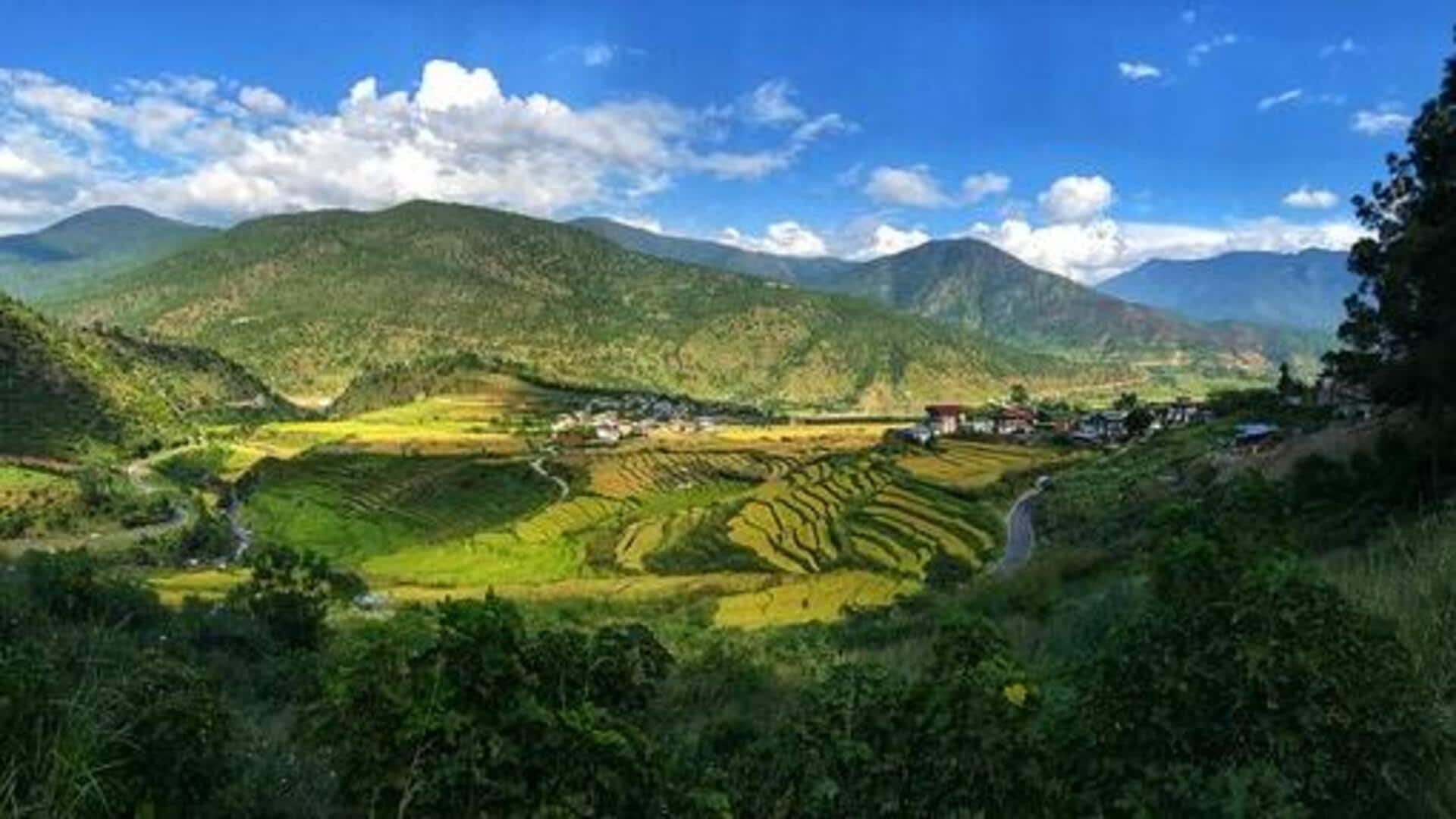
Solo journey through Bhutan's mystical mountains: A guide
What's the story
Bhutan, a small Himalayan kingdom, is celebrated for its monasteries, fortresses known as dzongs, and landscapes that span from lush subtropical plains to rugged mountains and valleys. Unique in its approach to prosperity, Bhutan prioritizes Gross National Happiness over traditional metrics. This philosophy draws travelers who are in search of both thrilling adventures and a sense of inner tranquility.
Hiking adventure
Trek to the Tiger's Nest Monastery
The iconic Paro Taktsang, known as Tiger's Nest Monastery, is perched about 900 meters above Paro Valley. A trek to this revered site takes roughly four to five hours for a round trip. The path meanders through pine forests, adorned with Spanish moss and vibrant prayer flags. Visitors reach a place of spiritual solace and are rewarded with expansive views of the valley below.
City exploration
Discover Thimphu: A blend of tradition and modernity
In Thimphu, Bhutan's capital, tradition meets modern life. Landmarks like Tashichho Dzong, a fortress with the King's throne room, and the grand Buddha Dordenma Statue stand out. Walking through Thimphu's markets, visitors experience the city's rhythm and purchase local artisans' handicrafts. These markets are a window into Bhutanese culture, offering a balance of historical significance and the buzz of contemporary living.
Culinary journey
Experience authentic Bhutanese cuisine
Bhutan's cuisine is simple yet flavorful. The national dish, Ema Datshi, combines chili peppers with cheese for a distinctive spicy taste. Accompanying most meals is red rice, known for its nutty flavor. Solo travelers seeking genuine local flavors should visit small eateries or family-run restaurants. These places offer a warm atmosphere and serve homemade dishes that provide a true taste of Bhutan.
Cultural heritage
Embrace tranquility at Punakha Dzong
Punakha Dzong, Bhutan's architectural gem, stands at the Pho Chhu and Mo Chhu rivers' confluence, symbolizing unity. Springtime visitors witness it framed by lilac jacaranda blossoms, a memorable sight. Within its walls, intricate designs narrate Buddhist lore, and outside, the tranquil views encapsulate peace. This dzong is a testament to the country's cultural heritage and natural beauty.